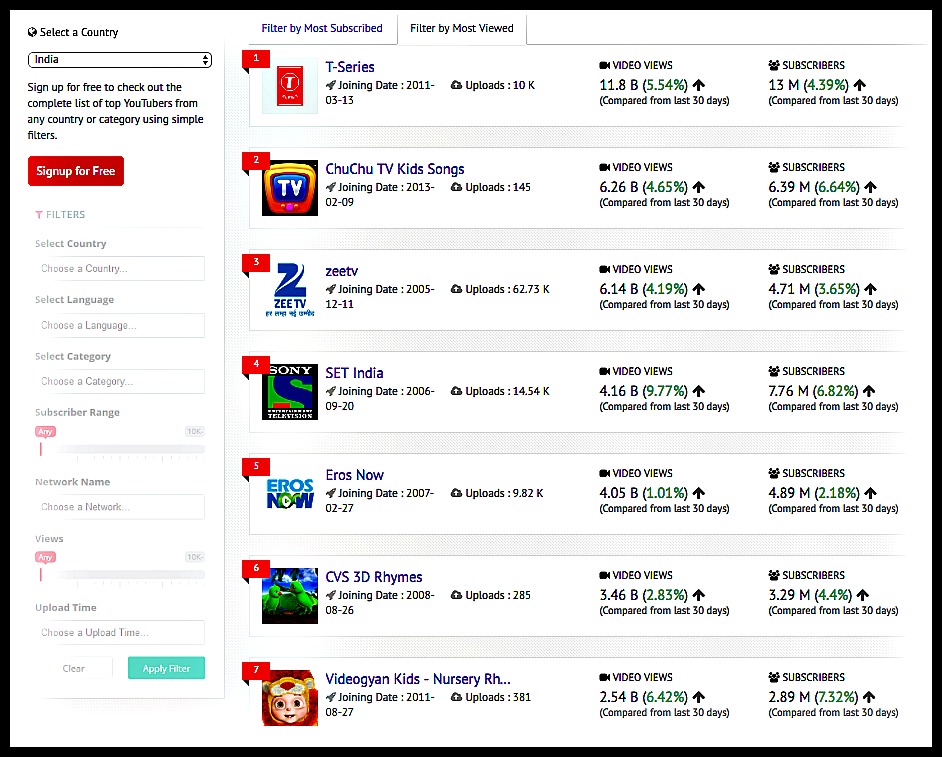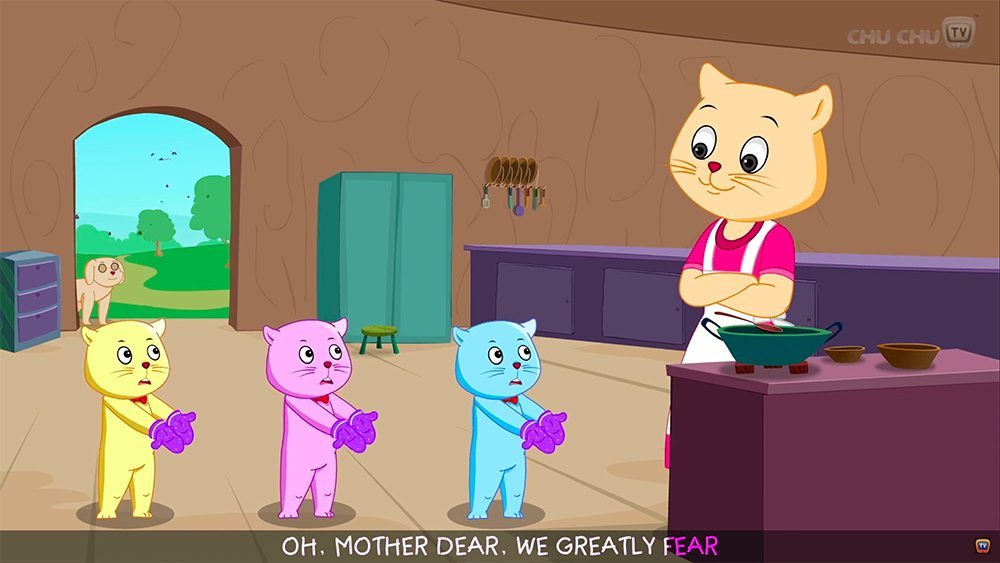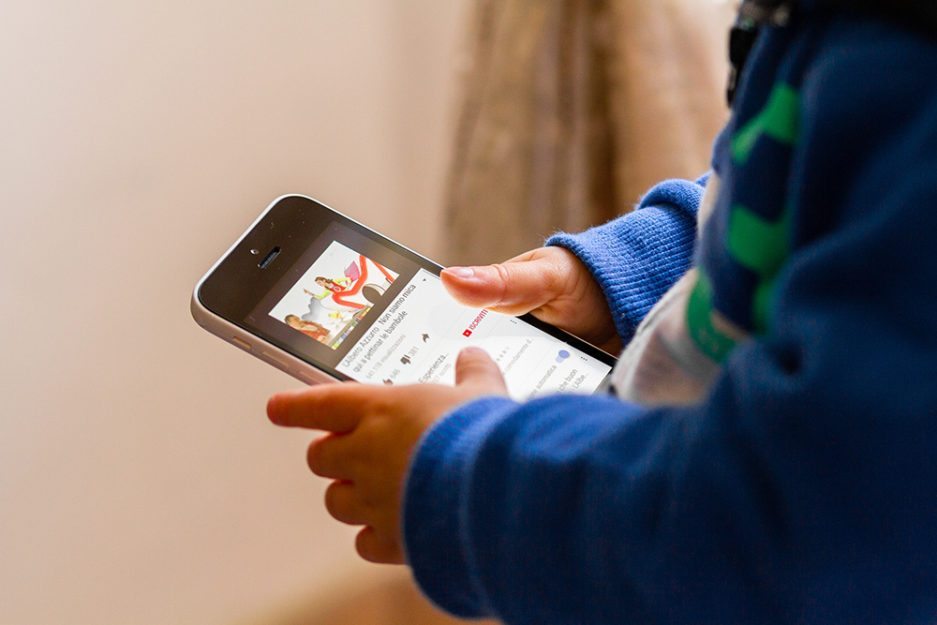What does every parent worry about when their children devour videos on YouTube?
That the kids may start off by watching something innocuous and harmless — say a Disney movie song like Let It Go from Frozen — and then, thanks to YouTube’s over-enthusiastic algorithmic recommendation engine, end up watching something entirely different and, needless to say, inappropriate (maybe a porn video also titled ‘Let It Go’?).
To solve this problem, YouTube launched the YouTube Kids app in the US in February 2015. “Today, we’re introducing the YouTube Kids app, the first Google product built from the ground up with little ones in mind. The app makes it safer and easier for children to find videos on topics they want to explore… Now, parents can rest a little easier knowing that videos in the YouTube Kids app are narrowed down to content appropriate for kids,” announced Shimrit Ben-Yair, YouTube Kids Group Product Manager, in an official blog post at that time. It has since been launched in some other countries like Australia, Canada, UK, Ireland and New Zealand.
Now, FINALLY, it looks as if YouTube (YT) is bringing the ‘Kids’ app to India. Although the official announcement is slated for Wednesday, November 9, at a press conference in Delhi, sources close to Google in India confirmed to FactorDaily that YouTube Kids is indeed going to be up and running following the announcement. The fact that the press invite speaks of a “very special launch event” headlined by Malik Ducard, Global Head of Family and Learning at YouTube, is also a dead giveaway.
Finally, it looks as if YouTube is bringing the ‘Kids’ app to India. Although the official announcement is slated for Wednesday, November 9, sources close to Google in India confirmed to FactorDaily that YouTube Kids is going to be up and running soon
It makes perfect sense (one only wonders what took YouTube so long). After all, YouTube channels for kids are among the most watched channels in India — three of them, ChuchuTV Kids Songs, CVS 3D Rhymes, and Videogyaan 3D Rhymes, are among the top 10 most viewed YT channels in India, with ChuChu TV at No. 2, CVS 3D Rhymes at No. 6, and Videogyan Kids at No. 7 (the rankings are a bit different when filtered by the number of subscribers rather than views; though ChuChuTV and CVS stay in the top 10 most subscribed channels in India, Videogyan slips to No. 11). Just to take ChuChu TV’s example, with over six million subscribers and over six billion total views, it has a daily subscriber growth of 12,750 and over nine million views daily (not just from India but from across the world).
Kids channels are on a roll
In India, kids channels on YouTube are second only to mainstream music and entertainment channels in terms of subscribers and views. Interestingly, the non-kids channels in the Top 10 most subscribed/viewed channels all belong, without exception, to players who have been part of the entertainment industry for decades, whereas the digital-first top kids channels are barely a few years old. The No. 1 most subscribed/viewed YT channel in India is T-Series with over 13 million subscribers, 11.85 billion total views, and 21 million daily views. The others in the top 10 are SET India (7.7 million subscribers, 4.19 billion total views), Eros Now, Zee TV, Colors TV, YRF, Sony Music India, and Star Plus.
Subrat Kar, co-founder of Vidooly Media Tech, a data company that provides insights into and analysis of the digital video market across platforms like YouTube and Facebook, says that the children’s category is among the largest in India both in terms of viewership and share of digital advertising budgets and revenues. “The ‘kids’ category contributes around 15-20% of overall YouTube viewership in India and also commands the highest CPM (Cost Per Thousand*) rates,” says Kar.
Citing from insights gathered from his video analysis platform, Kar says: “In the last 30 days alone, the ‘kids’ category has contributed approximately 11 billion views across the world on YouTube, of which the majority was contributed by India-based YouTube channels (Chuchu TV, VideoGyan, Apuseries, Hooplakidz, Kids TV, CVS 3D Rhymes).” Kids channels on YouTube have over 200 million subscribers. The top 20 kids channels on YouTube generated near about 6 billion views in October 2016 alone, he adds.

The YouTube Kids app (there is no desktop version) comes with several features that make it a better and safer choice for children and parents. All content on the app is under four categories, Shows, Music, Learning, and Explore, and the videos are sourced from franchises as well as YouTube’s own content creators. Unlike YouTube, there is a filtering and curation process, and you can’t just sign up and start uploading videos. The app has larger images and bold icons, and voice search is built in to make it easier for preschoolers to find their favourite videos. There are also features like a timer, which allows a parent to set a time limit how long a child can view the app; a “silent” setting; and a “turn off search” setting, so that you can restrict your kids’ viewing to just the content shown on the homepage.
Netflix, Amazon gear up to compete with YouTube
Of course, YouTube is not the only video hosting platform that has figured out what a big market there is for children’s content. Netflix in India has always had a separate ‘Kids’ section with curated content deemed appropriate for young audiences — from shows and videos for tiny tots (such as Peppa Pig, Barbie, Alvin and the Chipmunks) to those for pre-teens and early teens (eg. My Babysitter’s a Vampire, Full House, Good Witch) — although there is no local content as yet.
“We believe the more people in a household who find something to love on Netflix, the more value they will draw from their membership. This is why, offering a great selection of TV shows and movies for kids and families is important to us. We’ve created 30 original kids’ shows to date,” said a representative of Netflix India.
On what kids want to watch, and whether there is a pressing need to localise content, the Netflix representative said: “Broadly, we’ve found that entertainment tastes are more similar than different around the world, and a good story has universal appeal.” They also added that to improve safety and privacy controls, Netflix offers the option to apply a PIN code on the account level to help give parents the tools to guide their children’s viewing, and members can find the feature under the “Your Account” tab when they log in onto Netflix.

Amazon Prime Video, as it gears up to launch in India, is also aggressively acquiring Indian video content made for children. “This is undoubtedly the best time to be a children’s content creator in the country,” says Rajiv Chilaka, founder and MD of the Hyderabad-based animation studio Green Gold Animation, creators of (arguably) the most popular Indian cartoon character/series for kids — Chhota Bheem.
“The scene is starting to get bigger by the day, with Amazon Prime Video and YouTube Kids app around the corner,” says Chilaka, adding even other online streaming networks like Voot, Hooq etc are going to have separate sections (on their websites) and apps (on mobile) for kids content.
“There is more work, more revenue streams. Even as DVD sales dried up and eventually almost died, content creators started earning revenues from digital content, either through tie-ups with streaming services or through ads. The Indian animation industry is only around 20 years old, and it’s time for the companies that have hung around for more than a decade or so to reap the benefits,” he adds. Chilaka reveals that he has already licensed 90% of the Chhota Bheem content library to Amazon Prime Video.
Kids channels and apps form a digital content category that can be monetised most easily, and this category is attracting a substantial share of digital advertising budgets
Chhota Bheem, besides being one of the biggest draws on kids TV channels like Pogo and Disney, also has some content exclusively on its YouTube channel at the moment. It has a little over four lakh subscribers of its YouTube channel, and around 320 million views of its videos.
However, Chilaka is less than gung-ho about YouTube, and says that while he has been approached by it for content on the YT Kids app, he’s still thinking about it. He says his experience with the pioneering video hosting platform has been less than encouraging, and he blames YouTube’s ad-revenue sharing model for this. “I don’t know if it makes sense for us. The model is one-sided, and it is tough for us to justify (giving YouTube exclusive access to our content),” says Chilaka.
YouTube generally has a revenue-sharing model with content creators, with the percentage share kept by the video platform calculated using a complex algorithm that takes into account CPM and other factors such as where the views are coming from. Views from outside India count in favour of content creators and they get a larger share of the pie; perhaps the reason channels like ChuChu TV with 40%-60% of viewership from outside India are reportedly earning revenues of Rs 30-40 crore a year. A Livemint story from July 2016 estimated ChuChu TV’s monthly estimated earnings to be between $61,200-$979,200 (at that time the channel had 5 million subscribers to today’s 6 million-plus).

Easy monetization, but at the cost of children’s health?
Of course, the motivation behind creating exclusive apps and content sections for children is not just to give parents some much-needed peace of mind. A separate app also makes it easier for brands to target their ads to prospective customers (kids as well as parents). And although YT kids has come under criticism for showing ads that promote unhealthy eating habits, YouTube countered this recently by adding YT Kids to the YouTube Red subscription plan, which filters out all ads from YouTube at a cost (a ‘family plan’ which covers YT Kids costs around $10 a month in the US).
Kar of Vidooly says kids channels and apps form a digital content category that can be monetised most easily, and this category is attracting a substantial share of digital advertising budgets. One of the reasons for this is children’s channels target two segments at the same time: the below-18 viewership as well as parents (mostly female audience in the 25-34 and 35-44 age group, a very desirable target group for advertisers in the FMCG category). The other reason is campaigns can be run seamlessly between TV, digital platforms and offline activities by advertisers, with very high conversion rates.
However, advertising on children’s channels — digital and television — is also more heavily monitored than other segments. The World Health Organisation recently came down heavily against ads for junk foods on online networks, and said “governments must do more to protect children from sophisticated online methods used to market unhealthy foods to them.” By using digital analytics and geo-location data, companies were defining their audience with great precision, enabling them to target the most vulnerable groups of children, WHO warned. It also raised the issue of parents often being unaware of what kind of ads their kids were watching.
That’s mainly because content today is consumed on mobile devices instead of a large, openly visible television in the drawing room, and there is just no way parents can monitor all the content their children are consuming and engaging with online.
Subscribe to FactorDaily
Our daily brief keeps thousands of readers ahead of the curve. More signals, less noise.
To get more stories like this on email, click here and subscribe to our daily brief.
*Cost per thousand (CPM) is a marketing term used to denote the price of 1,000 advertisement impressions on one webpage/video. If a content creator charges $2.00 CPM, that means an advertiser must pay $2.00 for every 1,000 impressions of its ad. The "M" in CPM represents the Roman numeral for 1,000. Source: Investopedia. Disclosure: FactorDaily is owned by SourceCode Media, which counts Accel Partners, Blume Ventures and Vijay Shekhar Sharma among its investors. Accel Partners is an early investor in Flipkart. Vijay Shekhar Sharma is the founder of Paytm. None of FactorDaily’s investors have any influence on its reporting about India’s technology and startup ecosystem.








